Exploring the Future of iPhone Flip Phone Technology
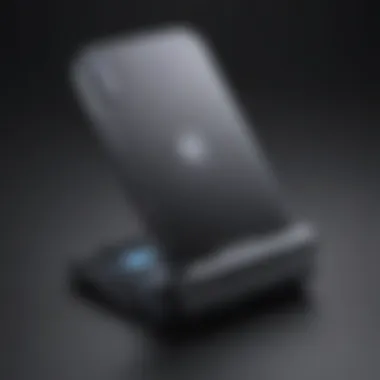
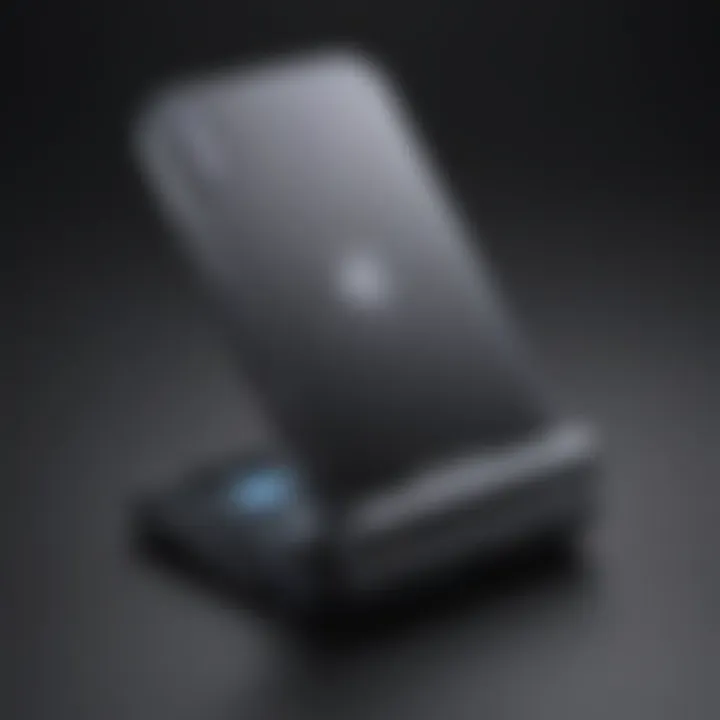
Product Overview
In recent years, the resurgence of flip phone designs in the smartphone market has caught the attention of consumers and tech analysts alike. With competitors such as Samsung launching successful foldable models, the allure of a flip variant of the iPhone has surfaced. Apple, known for its innovation and design philosophy, could potentially explore this unique form factor.
Prelude to the Apple product being discussed
The hypothetical iPhone flip phone proposes a distinct departure from traditional iPhone designs. This device may integrate the foldable technology while retaining Apple’s hallmark user experience and premium build quality. It is envisioned as a compact solution that offers both functionality and a nod to nostalgia.
Key features and specifications
While concrete details are yet to be confirmed, potential features of an iPhone flip phone could include:
- Dual Screens: Allowing for multitasking and enhanced usability.
- Advanced Hinge Mechanism: To ensure durability and smooth operation during folding.
- Improved Battery Life: Optimized for performance despite the folding feature.
- iOS Integration: Seamless compatibility with existing iPhone functionalities and apps.
Design and aesthetics
Apple's design ethos relies heavily on minimalism and elegance. A flip phone would likely possess a sleek profile, perhaps utilizing materials like glass and aluminum that are synonymous with iPhone builds. The color palette may reflect Apple’s current offerings, creating both modern and classic appeal. The potential for personalization with customizable covers could further entice consumers, catering to various tastes and styles.
Performance and User Experience
Apple's reputation in performance is built on solid software and hardware integration. An iPhone flip phone would be expected to follow this trend.
Performance benchmarks
Rumored specifications may suggest powerful internals akin to the latest iPhone models. This might include:
- A-series Chip: Offering robust performance.
- Ample RAM: Ensuring multitasking capabilities.
- Next-gen Connectivity: Including 5G support.
User interface and software capabilities
The user interface on a flip phone would need unique considerations. It may capitalize on the dual displays, enabling features like:
- Split Screen Functionality: For simultaneous app use.
- Intelligent Adaptation: Adjusting the interface based on the phone's orientation.
User experiences and feedback
Understanding how users perceive functionality in a flip phone format is crucial. Anticipated feedback would center around:
- Ease of Use: Testing the intuitive nature of a foldable device.
- Durability Concerns: Addressing potential wear from the folding mechanism.
"The success of any new device hinges on how seamlessly it integrates into the user's life, and a flip phone must prove it can enhance usability in innovative ways."
Comparison with Previous Models or Competitors
By learning from past models, Apple could strategically enhance the flip phone's features.
Advancements and improvements from previous models
The proposed flip phone may harness advancements seen in recent releases. Incorporating features based on consumer feedback from earlier models may result in:
- Enhanced Camera Systems: Incorporating the latest imaging technology.
- Sustainable Materials: As consumers become more environmentally conscious.
Competitive analysis with other similar products
Samsung’s Galaxy Z Flip has set a standard in the current market. A critical analysis includes:
- Form Factor: Look at how Apple would differentiate with design choices.
- Price Point: Evaluating how Apple positions its product against competitors.
Value proposition
The introduction of a flip variant can potentially strengthen Apple’s standing within the foldable market segment. By showcasing unique features, a blend of iPhone’s established ecosystem with innovative technology could present a strong value proposition.
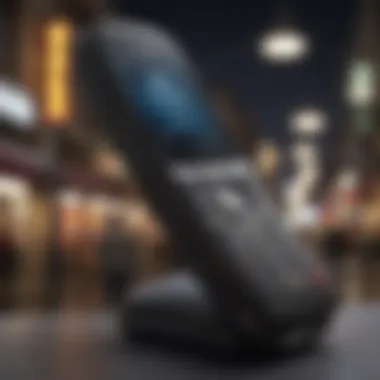
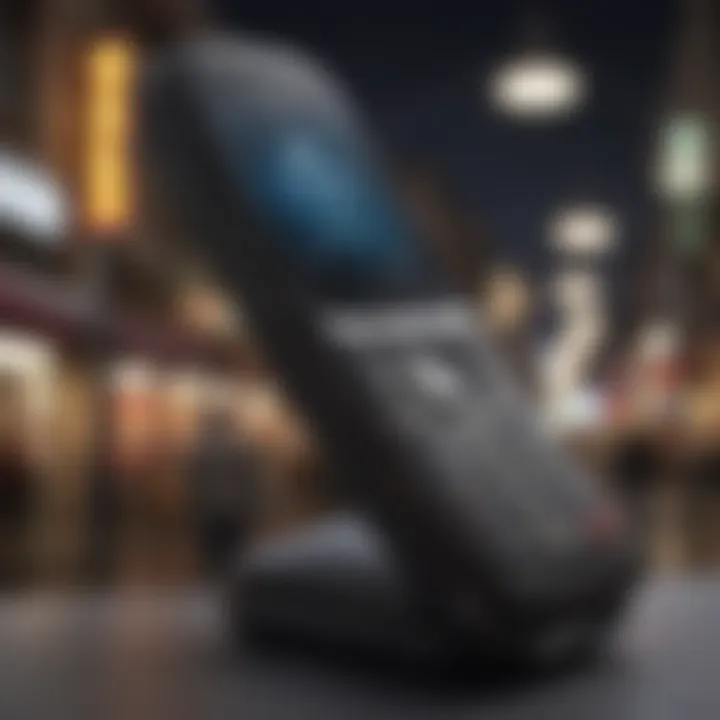
Tips and Tricks
For a hypothetical iPhone flip phone, assuming it follows Apple traditions, several optimizations could enhance user experience:
- Shortcut Customization: Fitting the dual-screen experience.
- Camera Mode Enhancements: Tailored for foldable usage.
Latest Updates and News
As of October 2023, speculation surrounding a flip phone continues to grow. Keeping an eye on industry news is essential, including:
- Software Beta Releases: Indicating potential features.
- Keynote Events: Where new announcements may be revealed.
This exploration underscores the dynamics surrounding the potential concept of an iPhone flip phone, examining implications for Apple and its consumers in a rapidly evolving technological landscape.
Prologue to Flip Phones
The exploration of flip phones, particularly in relation to a possible iPhone flip phone, is critical for understanding the current landscape of mobile design. Flip phone designs have gained renewed interest as consumers seek devices that combine nostalgia with modern technology. The significance of this topic lies in the intersection of consumer preferences and technological advancements, revealing how companies like Apple may adapt to market trends.
Historically, flip phones were symbols of innovation, offering compact designs that appealed to many users. Their functionality emphasized practicality. However, the touch screen smartphones that emerged in the late 2000s overtook them in popularity, leading to a decline in flip phone production. Today, with the resurgence of foldable devices, there is an important opportunity for Apple to consider how an iPhone with a flip design could cater to the evolving desires of consumers.
Historical Perspective
Understanding the history of flip phones provides insight into their design evolution. Initially, these devices were known for their compact design in a world dominated by bulkier phones. The Motorola Razr, released in 2004, epitomized this trend and became an iconic model of the flip phone era. However, as smart technology advanced, the market shifted toward larger screens, resulting in the decline of this design. Modern smartphones are now the norm, and flip phones have mostly disappeared from mainstream offerings.
Recently, brands like Samsung and Motorola have revived the flip phone format but integrated smart capabilities. This move parallels the interest in intelligent devices, creating a renewed appreciation for versatility in phone designs. Could Apple's potential entry into this market signal a broader trend towards marrying classic designs with current technology?
The Pull to Flip Designs
The attraction towards flip designs can be attributed to several factors:
- Nostalgia: Many consumers remember using flip phones, often fondly recalling the tactile experience of answering calls by simply flipping the device open.
- Compactness: A flip phone’s design allows for easy portability without compromising screen size.
- Durability: Flip phones typically offer better protection for screens when closed, providing a solution to frequent damage issues faced by standard smartphones.
- Unique Style: A flip phone stands out in a largely uniform smartphone market, appealing to those who value individuality in their devices.
Overall, the renewed interest in flip designs, alongside Apple’s potential foray into this market, could revolutionize how we view mobile devices. As technology evolves and consumer preferences shift, the concept of a flip iPhone may not only be feasible but could also redefine user experience in an increasingly complex digital landscape.
Current Trends in Mobile Design
The mobile design landscape has shifted noticeably in recent years. With the advent of advanced technologies, manufacturers are exploring new ways to achieve functionality and aesthetics. One important trend is the rise of foldable devices, which have sparked a resurgence of interest in flip phone designs. This trend reflects not just consumer desires for novelty but also an evolving understanding of how we engage with technology.
Within this space, brands are compelled to innovate, merging their hardware and software approaches into cohesive, versatile products. This sets the stage for exploring Apple's hypothetical entry into the flip phone segment. The concept of an iPhone flip phone isn't merely about aesthetics; it revolves around practicality and user needs.
Market Analysis of Foldable Devices
The foldable devices market shows a pronounced growth trajectory. Brands like Samsung have introduced products such as the Galaxy Z Flip series, which showcases how a traditional form factor can be reimagined.
These devices leverage flexible screen technologies that allow for compact designs without sacrificing display size. According to various market analyses, foldable phones are not just for niche segments. They address everyday needs by providing users who require portability the functionality of larger screens. Key trends found in foldable devices market analysis include:
- Increased consumer awareness and interest in flexible technology.
- Heightened competition among manufacturers to push technological boundaries.
- A gradual reduction in prices as the technology matures and production scales.
All these factors help to shape a competitive landscape that Apple must navigate if it chooses to release a foldable device, especially in a market that is still forming its identity.
Consumer Preferences Shifting
As the mobile landscape evolves, so do consumer preferences. Users are increasingly drawn to devices that combine functionality with compactness. Research shows several key preferences shaping the market:
- Durability: Consumers expect better resilience from foldable devices than traditional designs. Users want to ensure longevity in rugged conditions.
- Multitasking Capabilities: With larger screens come more complex functionalities. Users favor devices that offer seamless multitasking options.
- Aesthetic Appeal: The combination of innovative design and sleek look holds significant appeal. People are drawn to devices that are visually striking yet practical.
This shifting consumer landscape means that Apple must closely analyze what users are seeking if it chooses to venture into flip phone designs. An understanding of these trends will guide Apple's approach to meeting customer expectations.
The iPhone Ecosystem
The ecosystem surrounding the iPhone plays a fundamental role in understanding the potential introduction of a flip phone variant. The iPhone continues to be a flagship product for Apple, serving as a central component around which a vast array of services and devices are connected. The seamless integration of hardware, software, and services within this ecosystem is a critical consideration for Apple when exploring new design concepts.
When discussing the iPhone ecosystem, one must focus on specific elements that contribute to user experience. Apple's iOS platform, the App Store, and features like iCloud and Continuity create a cohesive environment that enhances user engagement. Each innovation in the iPhone line not only brings new customer interest but also fortifies the existing ecosystem.

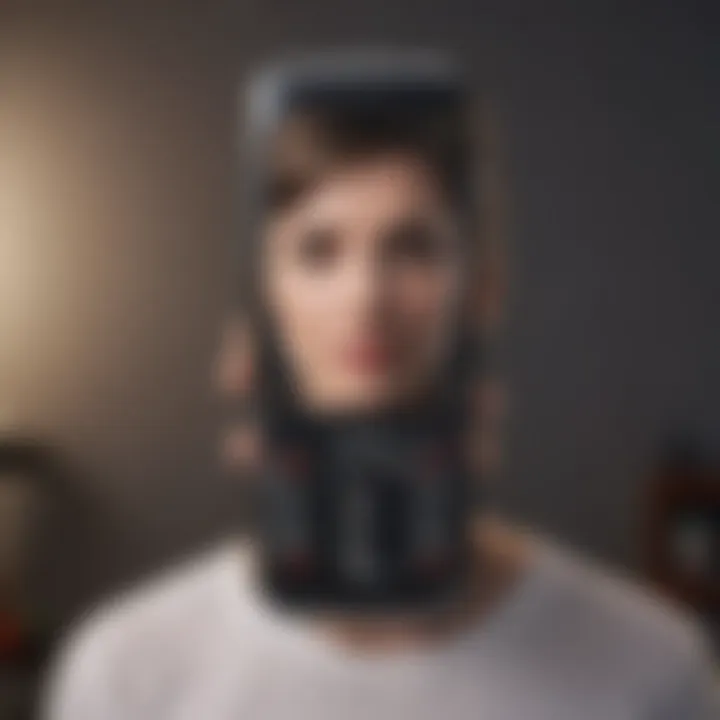
Benefits of the iPhone Ecosystem
- Interconnected Devices: iPhones, iPads, Macs, and Apple Watches work together effortlessly, allowing users to transition smoothly between tasks and applications.
- Synergy of Services: Services such as Apple Music, Apple Fitness+, and Apple Pay add layers of value that sync with users' lifestyles.
- Security and Privacy: The emphasis Apple places on data security strengthens customer loyalty, making them more likely to embrace new products, including a potential iPhone flip phone.
- Rich App Environment: A diverse range of applications tailored for various needs enhances the utility of the iPhone, creating a strong incentive for any new form factor.
A flip design would need to align with these strengths while also innovating. The challenge lies in meeting user expectations while maintaining product identity.
Historical iPhone Innovations
Throughout Apple's history, the introduction of novel technologies and designs has significantly shaped the smartphone industry. Innovations like the retina display, Face ID, and Dual Camera systems have set the standard in mobile technology. Each step forward in iPhone design not only reflects consumer demands but also demonstrates Apple's commitment to pushing boundaries. Users have come to expect groundbreaking features with each new iPhone release, making it essential for a potential flip phone to deliver comparable, if not superior, advancements.
For example, the introduction of the iPhone X marked a significant shift to edge-to-edge screens and elimination of the home button. Such changes redefine how users interact with their devices, emphasizing the importance of thoughtful, user-centered innovations in any future products.
User Expectations from Apple
Apple's audience harbors profound expectations. Given the history of the brand, customers anticipate a balance between novelty and familiarity. Users expect Apple to maintain the following:
- Intuitive Design: An easy-to-use interface remains paramount, even as form factors change.
- Quality and Performance: Users look for high-performance devices that do not compromise on speed and functionality.
- Robust Ecosystem Integration: New devices should integrate effortlessly with existing Apple services and hardware.
- Aesthetic Appeal: The design of an iPhone flip phone must reflect the high standards of style and luxury that Apple is known for.
Technical Feasibility of an iPhone Flip
The consideration of a flip-style iPhone necessitates a focus on technical feasibility. This area encompasses various elements that are crucial for the successful development and execution of such a device. Evaluating this feasibility involves reconnaissance of design methodologies, engineering principles, and necessary innovations which are instrumental for Apple's possible transition into this unique form factor.
Engineering Challenges
Engineers face distinct challenges when designing a flip phone, especially when facing Apple's established standards. One primary concern is the hinge mechanism, which must strike a balance between durability and smooth operation. The hinge needs to withstand extensive opening and closing without introducing flaws, such as misalignment or stiffness, which can compromise user experience.
Another consideration includes managing complexity in the device's internal layout. A foldable iPhone requires an elegant arrangement of components, including the battery, motherboard, and display. The space efficiency will be critical, as the design must not sacrifice performance for compactness.
Additionally, thermal management poses significant challenges. More compact designs can lead to heating issues, especially when high-performance processors are involved. Engineers will need to devise innovative cooling solutions that ensure the device maintains optimal operating temperatures without excessive bulk.
Material Considerations
The choice of materials is fundamental in ensuring the success of an iPhone flip. Flexible displays, such as those created using OLED technology, offer the potential for foldability while maintaining image quality. Developing a robust and lightweight version of this display is imperative, as it will directly affect the device's overall functionality.
The outer casing must also be selected with care. It should afford protection yet remain sleek. Options like aluminum or advanced polymers may be considered for their strength-to-weight ratio. Furthermore, advanced coatings may contribute to durability, even in the face of frequent folding.
There also exists the consideration of wear and tear on the screen and hinge due to continuous use. Materials will need to endure repeated stress without showing signs of aging too quickly.
Developing an iPhone flip phone is not merely about aesthetic appeal. It involves intricate engineering and material innovations that will ultimately dictate the product's success in a competitive market.
Design Elements to Consider
When contemplating the potential introduction of an iPhone flip phone, it is crucial to focus on the design elements that would define such a device. This goes beyond aesthetic appeal; it delves into functionality, user experience, and overall brand alignment with Apple's identity. Each design aspect presents its own set of challenges and opportunities that must be carefully scrutinized.
Screen Technology
The screen technology is paramount in any foldable device. Apple must opt for a panel that balances flexibility with high performance. OLED displays present an appealing choice, as they provide vibrant colors and excellent contrast ratios. However, incorporating flexible OLED requires innovations in production lines. Apple could consider materials like Ultra-Thin Glass, which would protect the screen without adding excessive bulk. Important factors to include in this decision would be:
- Brightness and visibility: Users expect high visibility in various lighting situations.
- Touch response: The user interaction must be seamless with no lag.
In addition, mechanisms preventing screen creasing is a significant point. Users would likely avoid a device that shows wear quickly. Apple has a strong reputation for quality; thus, a well-thought-out screen will be essential to maintaining this.
User Interface Adaptations
Adapting the user interface to a flip design could be a complex yet rewarding task. Users are accustomed to a standard vertical display, so the transition to a foldable form necessitates rethinking how the interface operates. Key considerations might include:
- Dynamic Content Adaptation: The interface must intelligently rearrange when transitioning between open and closed states. This ensures that users benefit from a consistent experience.
- App Compatibility: Apple must guarantee that existing apps function flawlessly in this new format. Developers might need guidance on how to optimize their applications for the flip interface.
Additionally, gesture controls might enhance user engagement. Implementing features like sliding actions or gestures could deliver an intuitive experience, making the transition to this new design fluid for users.
Durability and Build Quality
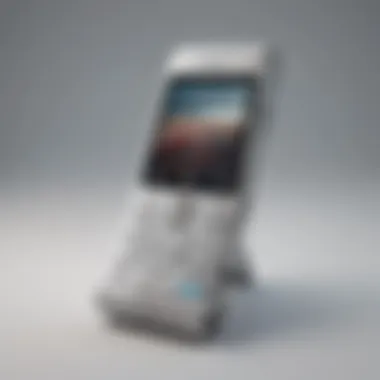

Durability cannot be overlooked when considering a foldable phone. Users want a device that withstands daily use and occasional mishaps. Apple's commitment to quality means it needs to utilize robust materials. This involves understanding:
- Hinge mechanism: A hinge that allows smooth opening and closing without failure.
- Water and dust resistance: The device should maintain similar standards of protection as existing iPhones to ensure functionality in various conditions.
Build quality is crucial in fostering consumer trust. If a flip phone exhibits durability on par with Apple's current models like the iPhone 14 Pro, it can reassure potential buyers about its longevity. In the end, the harmonization of screen technology, user interface, and build quality can define the smartphone’s fortunes in the competitive landscape.
Potential Market Impact
The notion of an iPhone flip phone presents a compelling study into the dynamics of the mobile market today. These dynamics are essential for understanding Apple's potential position and strategy within an increasingly competitive environment. As traditional smartphones face stagnation in innovation, the revival of flip designs marks a significant shift. This trend creates an opportunity for Apple to not only invigorate consumer interest but also redefine its footprint in the smartphone marketplace.
Competitive Landscape
The competitive landscape for a potential iPhone flip phone is characterized by both established brands and emerging players, each vying for market share in the foldable segment. Companies like Samsung have successfully launched their Galaxy Z Flip series, setting a precedent for stylish, functional devices that appeal to a younger audience. This creates a direct challenge for Apple, known for its strong brand loyalty and innovative design philosophy.
A successful entry into the flip phone market would require Apple to not only match competitors in technological innovation but to also integrate unique features that resonate with consumer desires. These features could include enhanced camera technology, seamless software integration, and a robust app ecosystem, all of which have become hallmarks of the iPhone brand.
"To survive in a market defined by rapid change, Apple must not only innovate but also anticipate future trends in consumer behavior."
In addition, the integration of the iPhone flip phone into the existing iPhone ecosystem would be a significant factor. This ecosystem, encompassing services such as iCloud, Apple Music, and seamless connectivity with other Apple devices, could give Apple an edge. It presents an opportunity to leverage existing customer loyalty while attracting new consumers interested in the novelty of a flip design.
Sales Expectations
Sales expectations for a hypothetical iPhone flip phone must be approached with cautious optimism. Analysts predict that the foldable smartphone market will witness substantial growth. According to industry reports, the foldable device segment could exceed sales of traditional smartphones in the near future, driven primarily by consumer demand for sleek, compact forms of technology.
Major influencing factors include:
- Consumer Trends: A continued shift towards devices that offer both style and functionality.
- Price Point: The pricing strategy will be crucial. Consumers expect premium features at a competitive price.
- Marketing Strategy: Apple’s robust marketing approach will play a role in creating hype before launch, potentially leading to higher initial sales.
Engaging with early adopters and influencers could further amplify interest, bolstering the sales forecast. Finally, it is also essential to consider the longevity of the product; how well it meets consumers’ evolving needs will directly impact sales.
In summary, the potential market impact of an iPhone flip phone carries significant implications. By addressing competitive challenges and setting realistic sales expectations, Apple can position itself well in a market eager for innovation and practicality.
Consumer Perspectives
Understanding consumer perspectives is critical for any technological product's success, and this is especially true for the hypothetical iPhone flip phone. This section will explore the desires, needs, and potential reservations consumers may have regarding such a device. Insights into these aspects can guide Apple in its product development strategies while aiding marketers in framing their narratives effectively. By considering consumers' viewpoints, Apple can not only identify innovative features but also determine the right positioning in the competitive smartphone landscape.
Desires and Needs
Consumers are constantly searching for devices that not just meet, but exceed their expectations. In the case of a flip phone format, potential iPhone users may have several desires:
- Compactness and Portability: A flip phone design would appeal to those who desire a more compact device. The ability to fold a phone could make it easier to carry, fitting snugly into pockets and bags.
- Nostalgia and Aesthetic Appeal: Many users may feel a sense of nostalgia towards the classic flip phone designs of the past. An iPhone flip phone could tap into that sentiment, offering sleek retro styling combined with modern technology.
- Enhanced User Experience: Consumers typically want more interactive interfaces, improved battery life, and better multitasking capabilities. An iPhone in a flip design could potentially fulfill these needs, merging Apple's innovative user interface with a unique form factor.
- Durability and Screen Protection: With a flip design, users anticipate better protection for the screen when the device is closed. This protects against unintentional scratches and cracks, a common concern for smartphone users today.
These desires highlight the importance of understanding consumer preferences to develop products that resonate deeply with target audiences.
Potential Reservations
Despite the excitement surrounding a potential iPhone flip phone, consumers may also harbor specific reservations that Apple must address:
- Durability Concerns: Potential users might worry about the mechanical aspects of a flip phone. The hinges and mechanisms can wear down over time, leading to potential failures. This concern is heightened given Apple's reputation for quality and reliability.
- Usability Issues: Some consumers may wonder if the flip mechanism could interfere with usability. They may question whether a larger screen size would be compromised in a compact design or if functionalities would be limited compared to traditional iPhones.
- Cost Considerations: Apple products are often priced at a premium. Potential buyers may hesitate to invest in a new device if the perceived value does not justify the higher price tag, especially compared to more mainstream smartphones.
- Updates and Support: Users may be concerned about the longevity of software updates and overall support for a new form factor. If Apple does not commit to providing updates as rigorously as with their other devices, users might feel uncertain about their investment.
"Understanding and addressing consumer reservations is crucial for the successful adoption of any new technology."
This dual examination of desires and reservations illustrates the multifaceted nature of consumer perspectives. The compilation of these insights can greatly benefit Apple as it contemplates the development of an iPhone flip phone. By tuning into what consumers genuinely want while also alleviating their concerns, Apple could successfully carve out a niche in this innovative segment.
The End
The conclusion of this article serves as a crucial summation of the processes and insights shared throughout the exploration of the concept of an iPhone flip phone. This section distills the various threads of analysis, emphasizing the relevance of understanding both consumer desires and technological feasibilities for a potential new product from Apple.
Summary of Insights
Addressing the importance of the flip design, this examination highlighted key elements such as the resurgence of interest in foldable devices, prompted by competitors like Samsung and Motorola. Consumers today are drawn to unique designs that distinguish products in a saturated market. Throughout this article, we explored the technical and engineering challenges Apple might face.
From material choices necessary for durability to user interface adaptations for the unique form factor, these factors play a significant role in the success of an iPhone flip phone. The discussion revealed how Apple's innovative history could meet modern market preferences. Moreover, consumer reservations about such a transition were also considered. Concerns regarding functionality, price, and the potential loss of the traditional iPhone experience cannot be underestimated.
Future Considerations for Apple
Looking ahead, Apple has several decisions to make regarding the development of a flip phone. They must weigh whether there is a sustainable market for such a device. Research indicates some consumers are indeed interested, but Apple must carefully assess its core user base's expectations.
Investing in robust engineering solutions will be pivotal. Additionally, fostering consumer engagement will be essential to address reservations and gather vital feedback.



